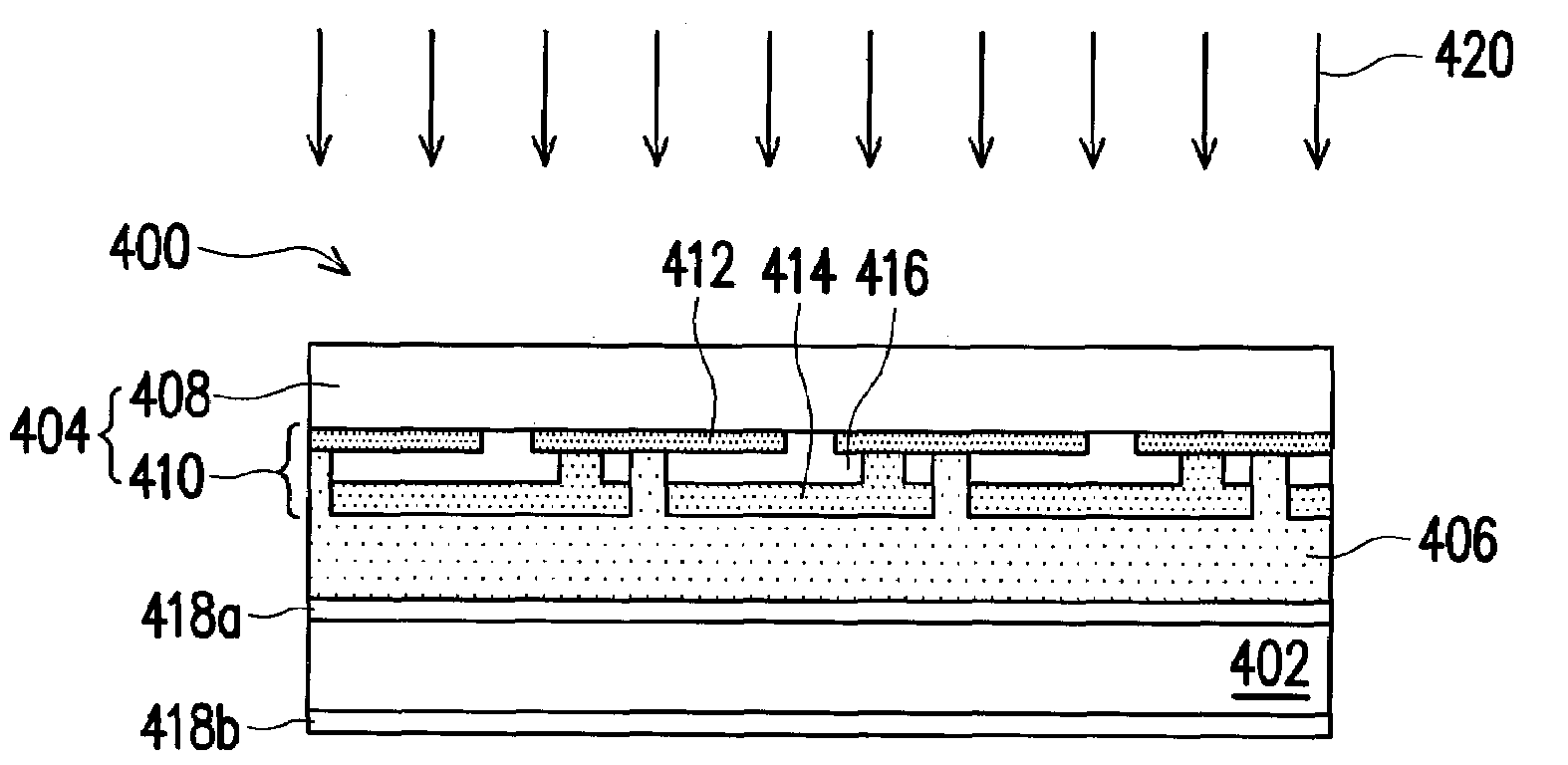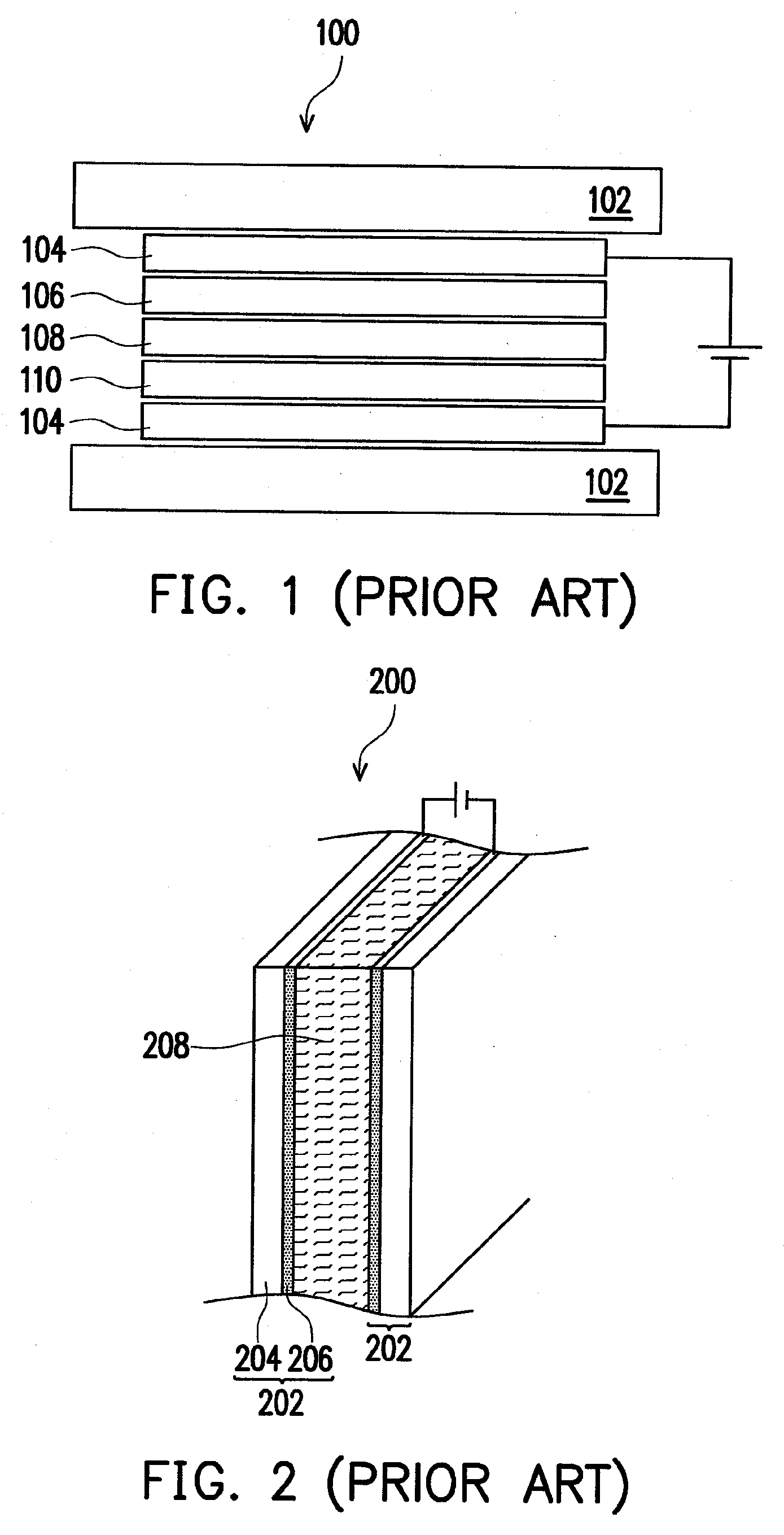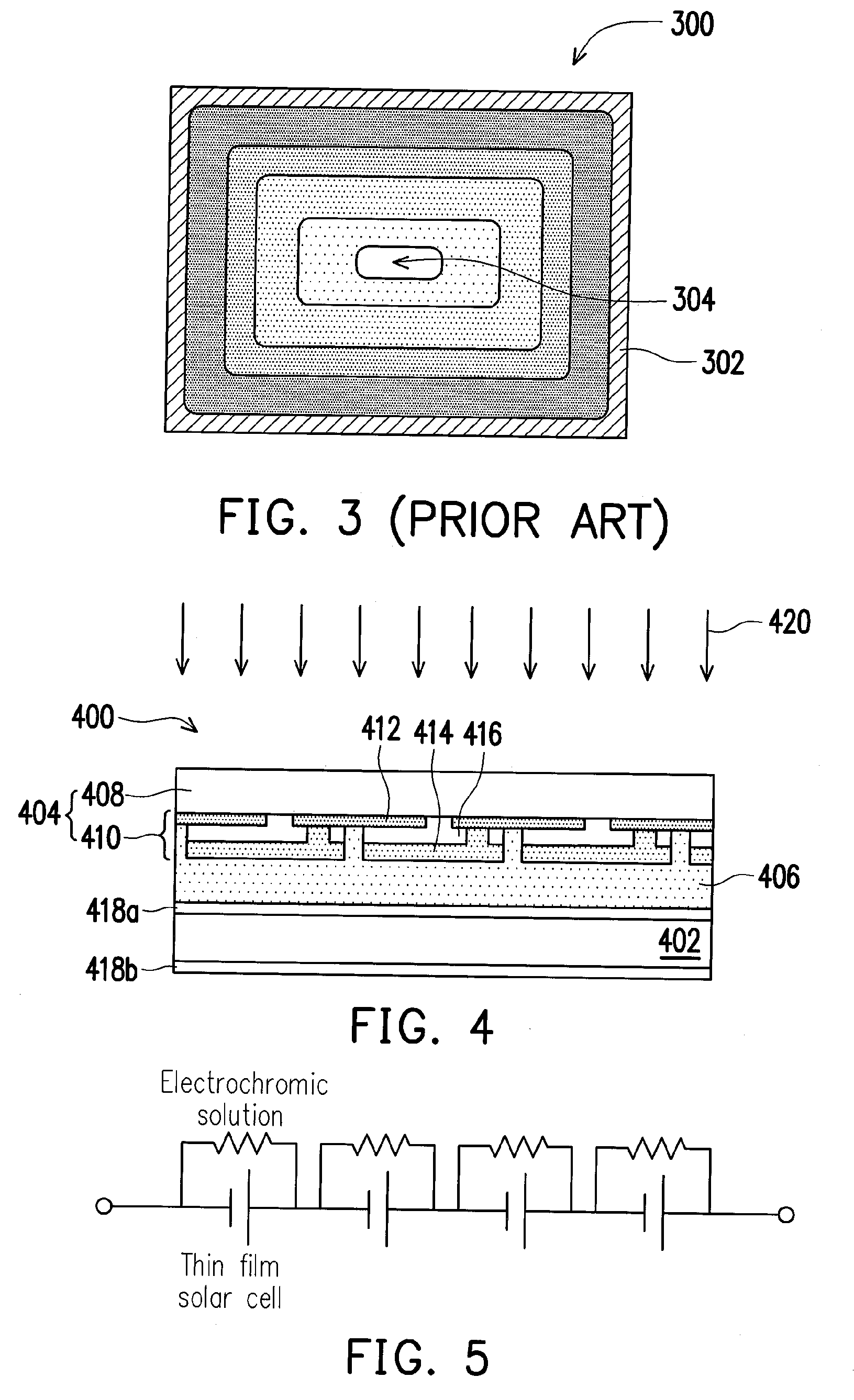Photosensitive electrochromic device
a photosensitive electrochromic and electrochromic technology, applied in semiconductor devices, optics, instruments, etc., can solve the problems of inability to reduce the intrinsic layer the inability to reduce the thickness of silicon thin-film solar cells, and the inability to consume energy. achieve the effect of reducing fabrication costs and time, and facilitating mass production
- Summary
- Abstract
- Description
- Claims
- Application Information
AI Technical Summary
Benefits of technology
Problems solved by technology
Method used
Image
Examples
first embodiment
[0039]In the first embodiment, the transparent non-conductive substrate 402 is, for example, glass, plastic or other appropriate flexible substrates. A material of the transparent substrate 408 of the thin-film solar cell module 404 is, for example, glass, plastic or a flexible substrate. A composition of the electrochromic solution 406 is, for example, at least one redox-type organic small molecule electrochromic material and at least one solvent, wherein the redox-type organic small molecule electrochromic material is one selected from the group consisting of cathodic electrochromic material, anodic electrochromic material, and a combination thereof. The above-mentioned cathodic electrochromic material is, for example, methyl viologen, ethyl viologen, heptyl viologen (HV), benzyl viologen or propyl viologen; the anodic electrochromic material is, for example, dimethylphenazine, phenylene diamine or TMPD (N,N′,N,N′-tetramethyl-p-phenylenediamine) and the redox potential of the elec...
second embodiment
[0042]FIGS. 6A-6E are cross-sectional diagrams illustrating a process flow of fabricating a photosensitive electrochromic device according to the present invention.
[0043]Referring to FIG. 6A first, by conducting the step of FIG. 6A, a TCO thin film is formed on the transparent substrate 600. Then, a first laser scribing process is performed to remove the TCO thin film within the areas P1 so as to form a plurality of anode layers 602.
[0044]Next referring to FIG. 6B, a plasma-enhanced chemical vapor deposition (PECVD) process is performed to implement continuous deposited film on the transparent substrate 600 and the anode layers 602 so as to form the semiconductor thin film 604, and then a second laser scribing process is performed to remove a portions of the semiconductor thin film 604 that is within the areas P2 and the semiconductor thin film 604 is separated into a plurality of semiconductor thin films 604.
[0045]Referring to FIG. 6C, a physical vapor deposition (PVD) process is p...
PUM
 Login to View More
Login to View More Abstract
Description
Claims
Application Information
 Login to View More
Login to View More - R&D
- Intellectual Property
- Life Sciences
- Materials
- Tech Scout
- Unparalleled Data Quality
- Higher Quality Content
- 60% Fewer Hallucinations
Browse by: Latest US Patents, China's latest patents, Technical Efficacy Thesaurus, Application Domain, Technology Topic, Popular Technical Reports.
© 2025 PatSnap. All rights reserved.Legal|Privacy policy|Modern Slavery Act Transparency Statement|Sitemap|About US| Contact US: help@patsnap.com



